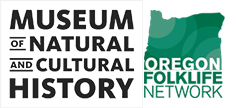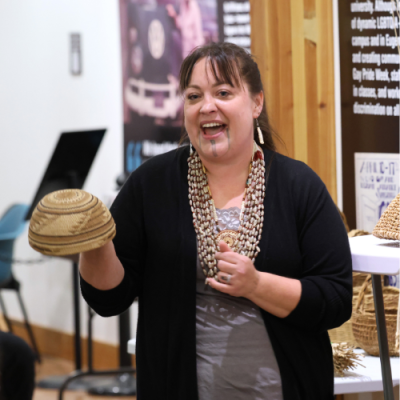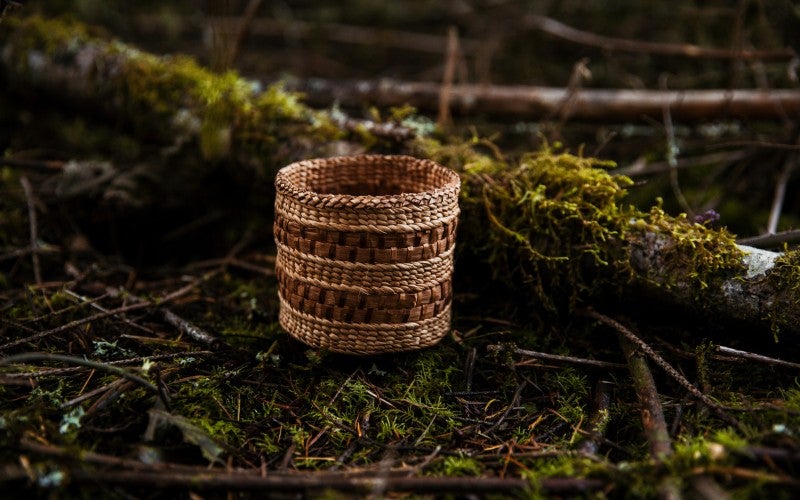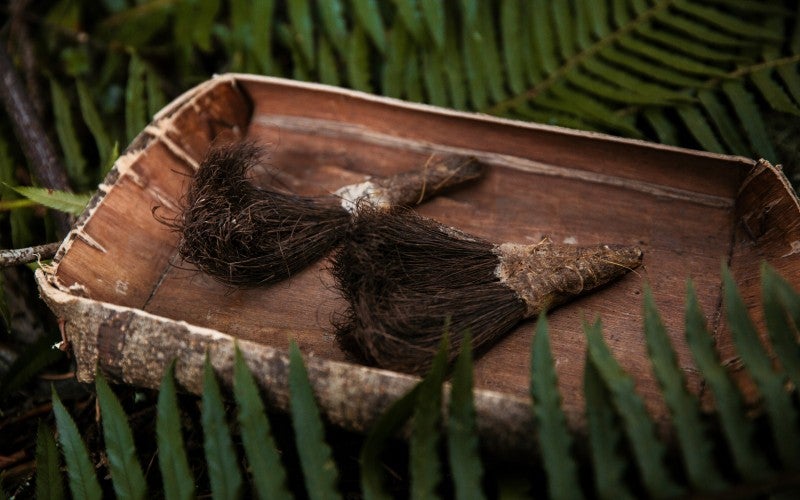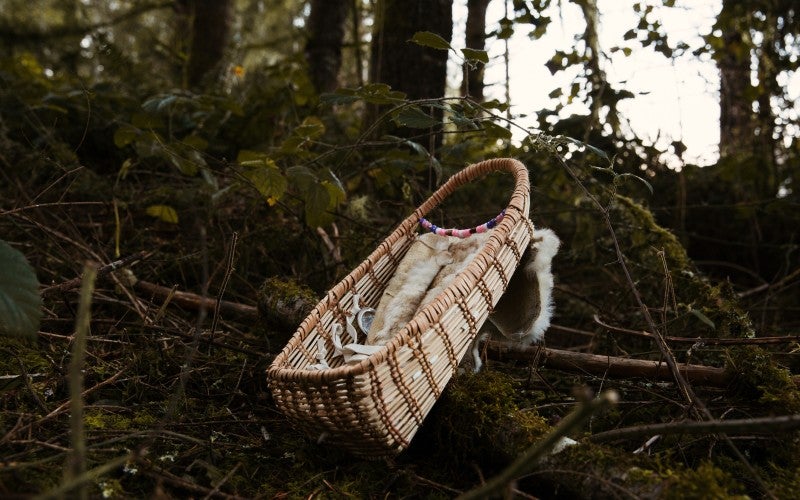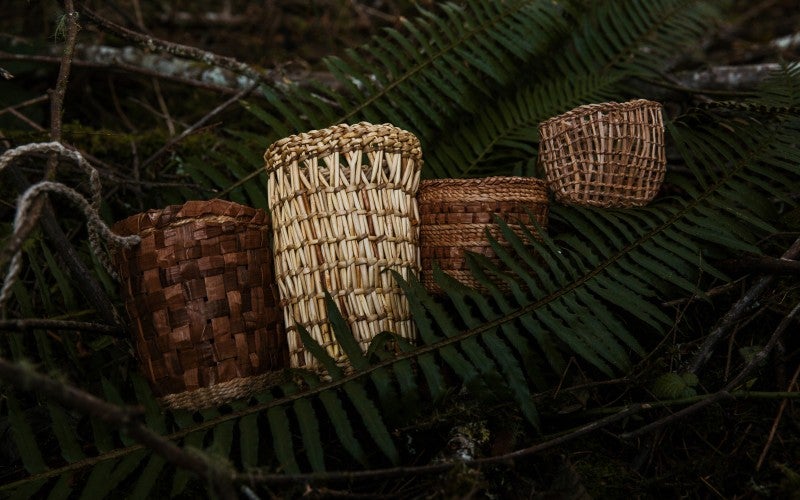Stephanie Craig (Dayton, OR) is a seventh-generation traditional basket weaver and culture keeper in the Grand Ronde homelands. She teaches intergenerational classes across the Pacific Northwest and beyond and has taught more than 25,000 students. “The best way I can keep this going,” she says, “is to teach as many people as I can.”
Bio
Stephanie Craig, anqati təmtəm tənas siyaxus, is of Santiam and Yoncalla Kalapuya, Takelma Rogue River, Cow Creek Umpqua, and Clackamas and Wakanasisi Chinook descendant. A traditional basket weaver, tradition keeper, ethnobotanist, ceremonial fisher, and traditional foods practitioner, she continues a seven-generation lineage on her mother’s side. Craig learned through family teachings and apprenticeships with elders from the Confederated Tribes of Grand Ronde, the Confederated Tribes of the Chehalis Reservation, the Suquamish Indian Tribe, and the Lummi Nation; she also studied with master basket makers atwai Sandra “Sam” Henny (Grand Ronde), atwai Minerva Soucie (Burns-Paiute), atwai Pat Courtney Gold (Wasco), and anthropologist Margaret Mathewson.Following tradition, Craig harvests and prepares her own materials -hazel, willow, barks, sedges, and rushes—returning to ancestral gathering places to tend plants and select year-old shoots for strong, straight weavers. For Craig, each basket is a vessel of place, story, and responsibility: “Holding a basket is holding history and the teachings of those who wove before us.”Her work appears in museum collections and exhibits throughout Oregon and Washington. Recent recognitions include a Master Artist award through the Oregon Folklife Network Folk & Traditional Arts Apprenticeship Program and a 2025 commission by the Oregon Department of State Lands to create medallions for the Oregon State Land Board Awards. The Seattle Children's Museum, The Burke Museum, Independence Heritage Museum, Linn County Historical Museum, and private collectors. Craig shares traditional and cultural knowledge widely through hands-on workshops, presentations, and collaborative projects with museums, schools, and land-stewardship partners.

